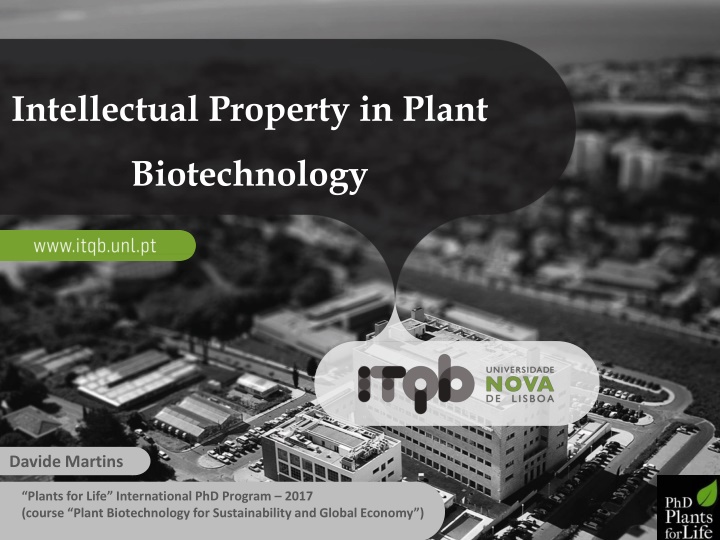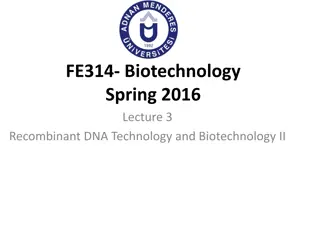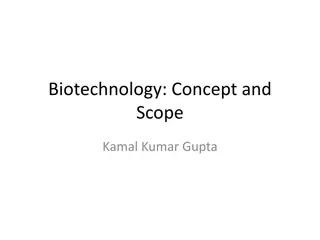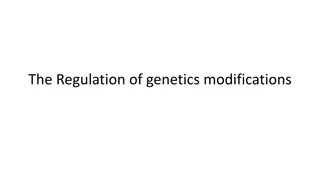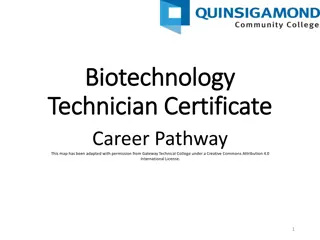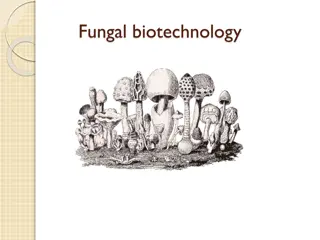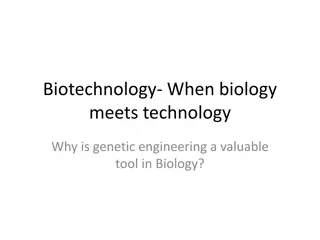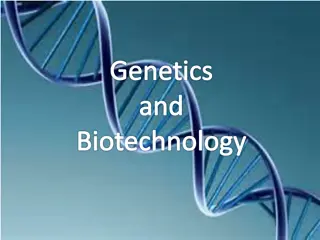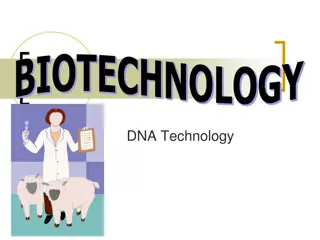Intellectual Property in Plant Biotechnology: Importance, Protection, and Implications
Understanding the significance of intellectual property in plant biotechnology is vital for innovation and development. It involves protecting creations of the mind like inventions, designs, and symbols to incentivize research and reward inventors. Milestones in intellectual property protection, means of safeguarding IP, and the scope of IPR are highlighted. While IP protection encourages investment and innovation, it also poses challenges in access to knowledge and collaborations, especially impacting developing countries.
Download Presentation

Please find below an Image/Link to download the presentation.
The content on the website is provided AS IS for your information and personal use only. It may not be sold, licensed, or shared on other websites without obtaining consent from the author.If you encounter any issues during the download, it is possible that the publisher has removed the file from their server.
You are allowed to download the files provided on this website for personal or commercial use, subject to the condition that they are used lawfully. All files are the property of their respective owners.
The content on the website is provided AS IS for your information and personal use only. It may not be sold, licensed, or shared on other websites without obtaining consent from the author.
E N D
Presentation Transcript
Intellectual Property in Plant Biotechnology Davide Martins Plants for Life International PhD Program 2017 (course Plant Biotechnology for Sustainability and Global Economy )
Advances in Plant Biotechnology Tissue Culture Techniques Examples: Genome Editing Techniques Plant Molecular Pharming Biotechnology New Crop Varieties
What is Intellectual Property? Creations of the mind, such as inventions; literary and artistic works; designs; and symbols, images World Intellectual Property organization. Protection of Intellectual Property (IP): Intended to protect and reward inventors Recover investment, generate income, fund R&D
Why is it important to protect IP? Attract investment to stimulate risky research Encourage agriculture innovation Yield % PVP Delivering better-performing products to farmers Nassem et al., (2005)
Milestones in IP protection 1930 US Plant Patent Act 1961 Plant Breeder s Rights (UPOV Convention) 1970 US Plant Variety Protection Act European Patent Convention excluding plants varieties (Art 53, b) 1973 U.S Supreme Court decision makes living organism patentable 1980 2002/2003 European Patent Office grants patent on plants obtained through conventional breeding (EP1069819; EP1211926)
Means of protecting IP Forms of intellectual property protection: Patents Novelty; Inventiveness; Applicability; Utility Trade Secret Plant Breeders Rights New; Distinctiveness; Uniformity; Stability
What is the scope of IPR? Maximize social welfare ACCESS PROTECTION To knowledge and As an incentive for improved technologies innovation
At what cost? Increased gap between developed and developing countries Restricted access to Higher costs to access improved germplasms protected innovations Interfere with sharing of knowledge in the scientific community Slow down scientific progress and collaboration opportunities
Case studies Genome editing technologies that revolutionize DNA manipulation: Zing-Fingers (Sangamo BioSciences) TALEN (Univ. of Minnesota and Iowa Univ. Research Foundation) CRISPR/Cas9 (in court) ODM (CibusTM) (see Genome Editing presentation for further information)
CRISPR Patent- Court Battle Who was the first to invent? First to win patent in 2014 (Broad Institute in Cambridge, Massachusetts) First to apply for patent (Univ. California) VS. Decision further complicated by the change in U.S patent system from first-to-invent to first-inventor-to-file (2013)
Useful References https://ec.europa.eu/food/plant/plant_property_rights_en http://www.fao.org/docrep/007/y5714e/y5714e03.htm https://www.epo.org/law-practice/legal-texts/html/epc/1973/e/ar53.html SMITH, S. Intellectual property protection for plant varieties in the 21st century. Crop science, 2008, 48.4: 1277-1290. SECHLEY, A., SCHROEDER, H. Intellectual property protection of plant biotechnology inventions. TRENDS in Biotechnology, 2002, 20.11: 456-461. FLECK, B., BALDOCK, C. Intellectual property protection for plant-related inventions in Europe. Nature Reviews Genetics, 2003, 4.10: 834-838.
